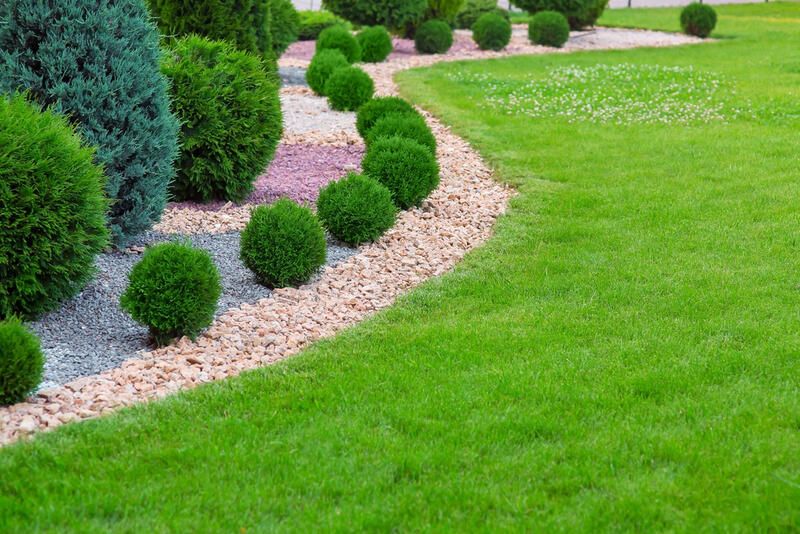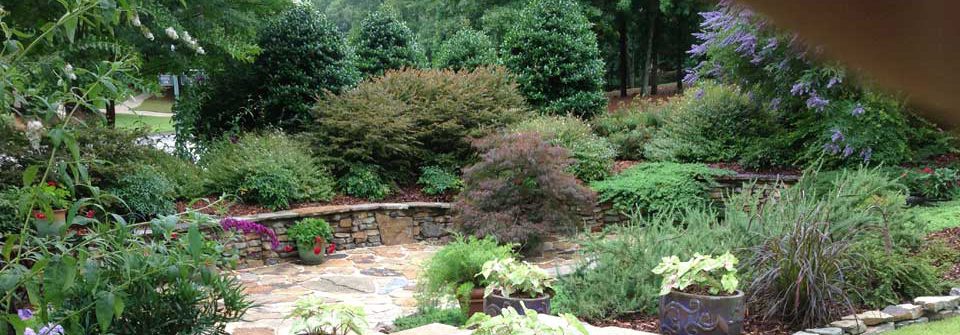Dependable Landscaping Contractor Jacksonville: Enhancing Your Property's Curb Appeal
Elevate Your Building's Visual With Sustainable Landscaping Designs and Eco-Friendly Practices

Advantages of Lasting Landscape Design
Applying sustainable landscape design methods not only conserves natural resources but additionally promotes biodiversity and boosts total ecological wellness. By picking environmentally friendly landscaping techniques, building proprietors can gain a multitude of advantages that expand past just visual appeal. One significant benefit is the reduction of water consumption through the usage of drought-resistant plants, rainfall gardens, and efficient watering systems. This not only lowers energy costs however also adds to water preservation efforts in the community.
Furthermore, lasting landscaping can boost soil health by minimizing the usage of chemical fertilizers and chemicals, consequently developing a much healthier environment for plant development and helpful soil microorganisms. This, consequently, boosts the general resilience of the landscape to stand up to environmental stress factors and climate adjustment impacts - lawn cleanup Jacksonville. In addition, sustainable landscaping techniques can bring in varied wild animals, including pollinators like bees and butterflies, promoting a much more vibrant and well balanced community within the residential property
Incorporating Indigenous Plants
To construct upon the advantages of lasting landscaping, a strategic focus on including indigenous plants can further improve ecological strength and advertise biodiversity within the landscape. Native plants are species that naturally occur in a particular area and have developed to flourish in the local climate, soil conditions, and community. By including native plants in landscaping layouts, homeowner can decrease water usage, minimize the need for chemical pesticides and plant foods, and sustain the neighborhood wildlife population.
Including indigenous plants additionally helps in protecting the unique personality and identity of an area's flora. These plants frequently call for much less maintenance once established, making them a lasting and economical landscape design option in the future. Additionally, indigenous plants can draw in native pollinators like bees and butterflies, adding to the general health of the ecosystem.
When choosing indigenous plants for landscaping projects, it is necessary to choose species that are fit to the certain ecological problems of the site. Consulting with botanical gardens or neighborhood nurseries can give useful assistance on picking the best indigenous plants for a specific area. By incorporating native plants right into landscape design designs, property proprietors can create attractive, sustainable exterior spaces that benefit both the neighborhood and the setting.

Water Conservation Methods
Reliable irrigation techniques play a critical function in sustainable landscaping techniques, making sure optimal water preservation efforts in exterior spaces. Leak watering provides water straight to the roots of plants, lessening evaporation and runoff.
In enhancement to advanced watering approaches, xeriscaping is an additional water-saving landscaping strategy that focuses on utilizing drought-resistant plants, these details compost, and efficient irrigation to produce a low-water landscape style - landscaping contractor Jacksonville. By selecting indigenous plants that are well-suited to the local environment and soil conditions, homeowner can lower the need for excessive watering, eventually preserving water and advertising a lasting outdoor environment
Eco-Friendly Hardscaping Ideas
Enhancing outside rooms with environmentally friendly hardscaping functions can add substantially to lasting landscape design practices. When considering hardscaping aspects, choose materials like reclaimed wood, recycled concrete, or natural rock to reduce environmental effect. These products not just include a special visual allure to your exterior room yet additionally reduce the need for new resources removal.
Applying permeable paving options such as crushed rock or absorptive concrete can assist minimize water overflow and promote groundwater recharge. These alternatives allow rain to leak into the ground, avoiding erosion and lessening the problem on stormwater systems.
Incorporating native plants right into hardscaping styles can further improve eco-friendliness by supporting local wild animals like it and minimizing the need for too much watering or chemical treatments. By including environment-friendly walls or vertical gardens, you can introduce more plant life into metropolitan setups, boosting air high quality and biodiversity.
Incorporating energy-efficient illumination, such as solar-powered LEDs, into hardscaping styles can reduce power usage and lower your residential or commercial property's carbon impact. Prioritizing environmentally friendly hardscaping concepts not only improves the beauty of your outside space however also demonstrates a dedication to environmental stewardship.
Upkeep Tips for Lasting Landscapes
:max_bytes(150000):strip_icc()/2583801_toddd_49-1-bc209c65ca1a4917afe2f2cbc437027c.jpg)
Routinely trim plants to promote healthy and balanced development and avoid overgrowth that can result in pest conditions or invasions. Usage natural fertilizers to nurture the dirt and plants without damaging chemicals that can seep right into the environment. For hardscaping aspects, such as absorptive pavers or stone pathways, consistently tidy them to avoid particles buildup and maintain their performance. By remaining proactive with maintenance jobs, you can maintain the appeal and sustainability of your landscape for years to find.
Final Thought
To conclude, lasting landscape design methods use countless benefits for homeowner, from improving the visual allure of the environments to promoting ecological conservation. By including indigenous Going Here plants, implementing water conservation strategies, and utilizing green hardscaping concepts, homeowner can develop stunning landscapes that are likewise ecologically liable. With proper upkeep, sustainable landscapes can grow and add to a healthier community for both humans and wildlife.
In addition, sustainable landscaping can improve soil wellness by minimizing the use of chemical fertilizers and chemicals, therefore producing a much healthier atmosphere for plant development and advantageous dirt organisms.To build upon the advantages of sustainable landscape design, a calculated emphasis on integrating indigenous plants can additionally enhance ecological durability and promote biodiversity within the landscape. By including indigenous plants in landscaping styles, building proprietors can reduce water use, reduce the requirement for chemical pesticides and fertilizers, and support the neighborhood wildlife populace.
These plants usually need much less maintenance when developed, making them a cost-effective and lasting landscaping option in the lengthy run. By integrating native plants right into landscaping designs, property owners can produce gorgeous, lasting outdoor areas that profit both the neighborhood and the setting.